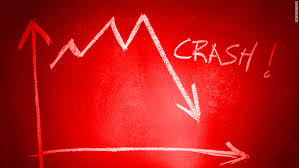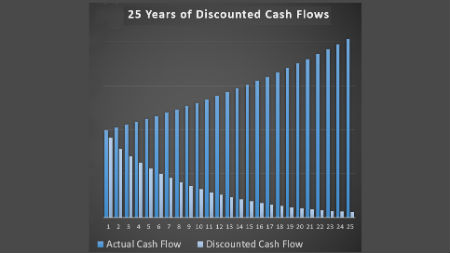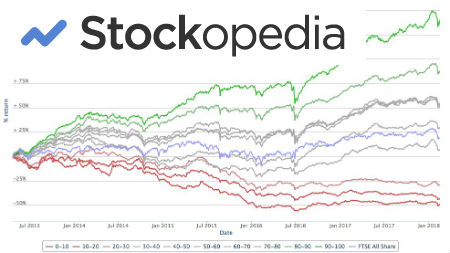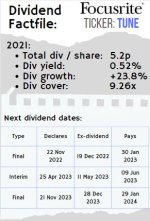Retire on Dividends - 5 easy-to-follow steps to get you there

|
To retire on dividends sounds like a dream, right? The truth is that with persistence, self discipline, and some good investments, you can make this dream a reality. Just look at our interview with Peter Thornhill. He's an example of someone who has built his dividend income up from just over AU $800 in the first year he invested to around AU $400,000 today! Ready to start? Good. |
|
Why we should all aim to retire on dividends
Retirement is changing dramatically. A generation ago, it was common for a worker to work for one employer their whole career and, in return, that employer would then pay for the worker's retirement (or their partner) for the rest of their lives. It was the employer's obligation to invest the assets to pay for the worker's retirement.
Times have changed, though, and if you are a younger worker then it is much more likely that you will need to provide for your own retirement. In many countries the state also has an old-age pension plan paid for by taxation, but these
are slowly becoming eroded and starting later and later in life.
This means that there isn't the same incentive to be loyal to one employer but it also means that you will have to build up and invest the assets yourself to provide for your retirement.
There are several types of assets you can build or acquire to allow you to retire. We looked at some of these in our article on Income Investing. This page, however, focuses on dividends as your means of retirement. We look at the various steps required to retire on dividends.
Step 1 - Earn some active income and then SAVE, SAVE, SAVE.
Unless you have come into some inheritance, had a lottery win, or some other lucky break, then you're going to have to build up your nest egg by saving.
This can sound daunting but the key is to pay yourself first.
As soon as you receive your pay check then put a set amount each month straight into a savings or investment account.
|
"This first step is the most important step in your route to riches. Virtually every self-made person has developed a strong savings habit. Books like "The Gospel of Wealth" and "The Richest Man in Babylon" highlight how important a savings habit is. How much you save is up to you but I recommend that it's enough that you have to think carefully about every penny you have left over to spend. It should be at least 10% of your take home pay but preferably much more. I remember that on my first salary, I was taking home about $2,700 after tax. Yet, I continued to live like a student, sharing an apartment, cooking my own meals, living so close to work that I didn't have to pay for transport and enjoying cheaper pleasures such as visiting museums, galleries, playing sports and seeing friends for coffee. Life
was fantastic (just like being a student really!) and in addition, I
was able to live on $1,100 a month and save the remaining $1,600. This
resulted in nearly $20,000 per year in savings that I have managed to
compound up over the last 12 years or so." |
|
Step 2 - Build a cash buffer
Before you start investing, it is important that you have a cash buffer in place.
The reason why is that your investing cash has to be cash that you won't touch for long periods of time (ideally over a decade).
Therefore, you'll need a cash buffer in case you have emergencies, such as medical needs, lost employment, or payments for property maintenance. Again, the amount you have as a cash buffer is up to you but we'd suggest at least six months worth of expenses.
Step 3 - Start investing!
As Peter Thornhill commented, the key to investing is simply to start.
It gets much easier once you've got going. In reality the investing is the fun part!
Our website is dedicated to ideas for when and where you invest but if you want to aim for retirement then dividend stocks should help you focus on what your portfolio is generating. Over the long run, you want high total shareholder returns, which is capital appreciation plus dividend returns.
|
"I really have a very simple checklist when investing. I look for companies that :
There tend to be more stocks that fit these filters during weak equity markets, so I actively save for and welcome down markets." |
|
Step 4 - Harness compound interest
Compound interest is so important if you're going to retire on dividends that we've written a whole page on it. You can find it here.
Like saving, virtually all long term fortunes have been built with compound interest and over time compound interest will give you a significant tailwind. In terms of dividend investing, compound interest means re-investing your dividends at the highest rate of return you can.
Compound interest requires patience and persistence but the rewards become ever greater over time and are well and truly worth it once you achieve financial independence.
Step 5 - Patience, persistence and time.
You will need to consider all of the above on your path to being able to retire on dividends.
Patience means that you don't touch or spend your principal but let it continue to work for you. There will be times when the market is strong and times when it is weak but you need to focus on continuing to save what you can and concentrate on your underlying investments. Over time, you want those investments to throw cash off for you that you can use to keep investing.
Persistence is important because there will be long periods of time when you feel like you are going nowhere. Maybe, your underlying investments are performing well but the stock prices keep going down. This shouldn't concern you as your goal is to grow your share of earnings and dividends from your portfolio. Lower stock prices may give you the chance to buy more shares cheaper.
There will also be times when your underlying companies that you've invested in do not perform well. You will then need to decide if it is a long term problem that the company may not recover from (you may want to sell in this situation) or it is a temporary or cyclical issue that should resolve itself over time. Even the best investors make mistakes over time but some diversification (although not too much) is important in protecting you from those mistakes.
... and finally: Time. As Warren Buffett has said: "Time is the friend of the wonderful company, the enemy of the mediocre."
If you can build a portfolio which contains some wonderful businesses then sit there. Time will do the work for you as these businesses throw off ever increasing amounts of cash that you re-invest into more wonderful businesses.
Of course, not every company you invest in will turn out to be "wonderful", but over time a handful of gems will enable you to retire on dividends for sure (and if you're not convinced you could pick wonderful businesses yourself, why not try a dividend yield ETF?)
If you continue to do this over a long period of time then you should be able to one day retire on dividends and get paid to enjoy your life! Look at our case studies on Unilever, Disney and Coca-Cola for examples of how great businesses can allow you, over time, to retire on dividends.
Got a BURNING dividend question for 6-figure dividend earner Mike Roberts?
What is it that you really want to know about investing?
Submit a query and Mike will write a page in response.
PLEASE NOTE - in accordance with our terms of use, responses are meant for education / interest only. We do not give specific financial advice.
What Other Visitors Have Said
Click below to see contributions from other visitors to this page...
Take out of IRA or use dividend income on cash account? 




take out of IRA or use dividend income on cash account?



